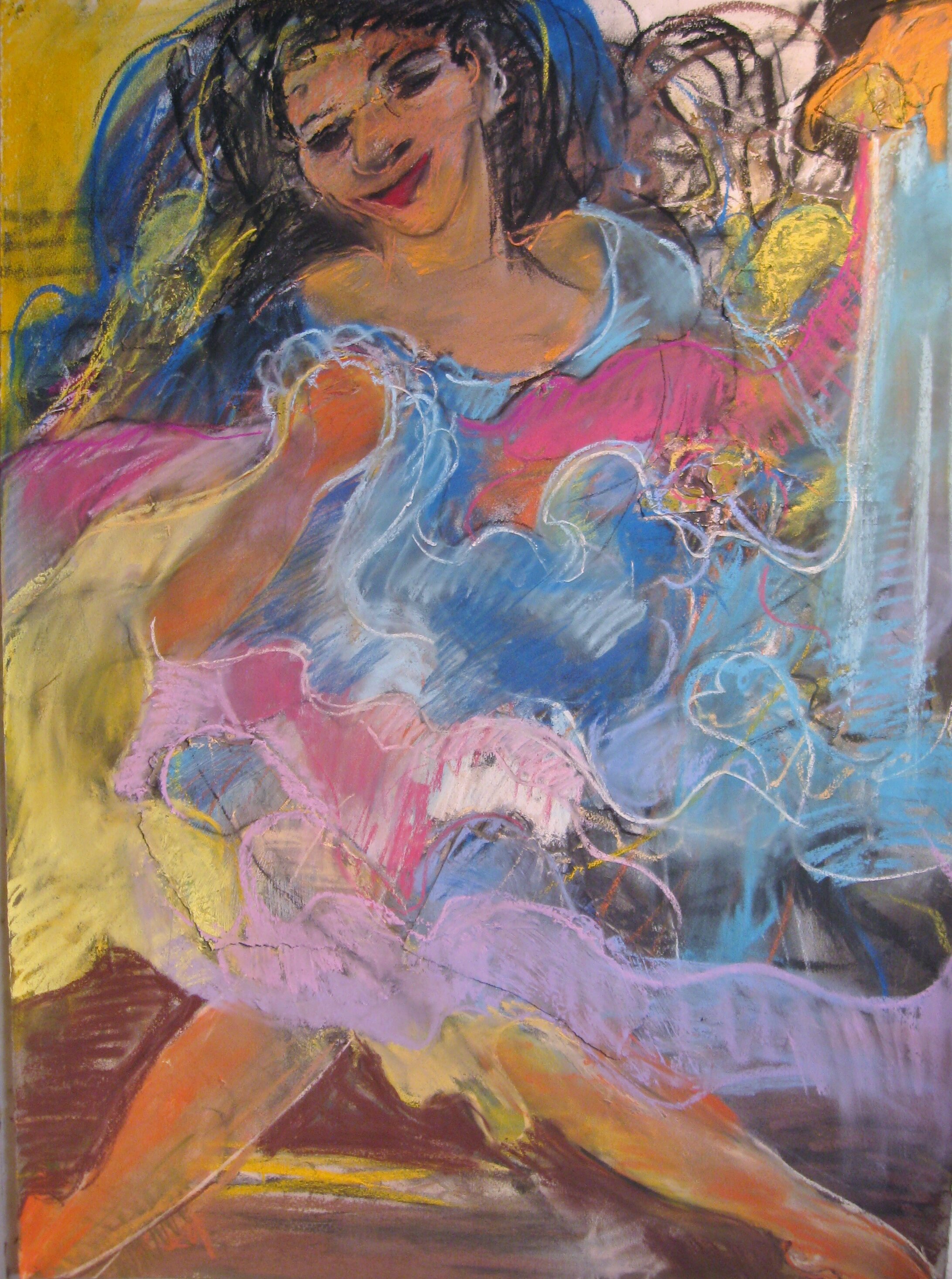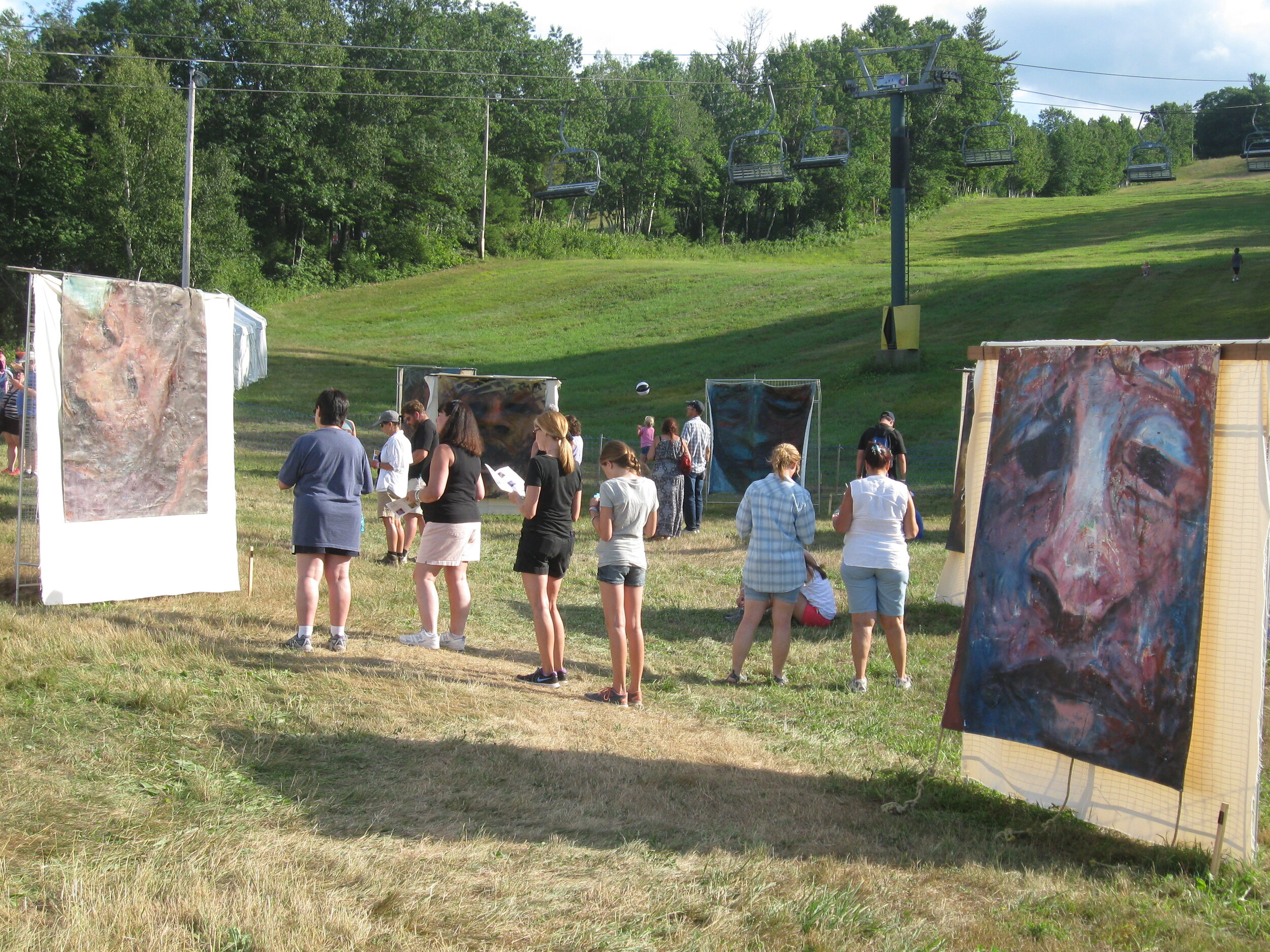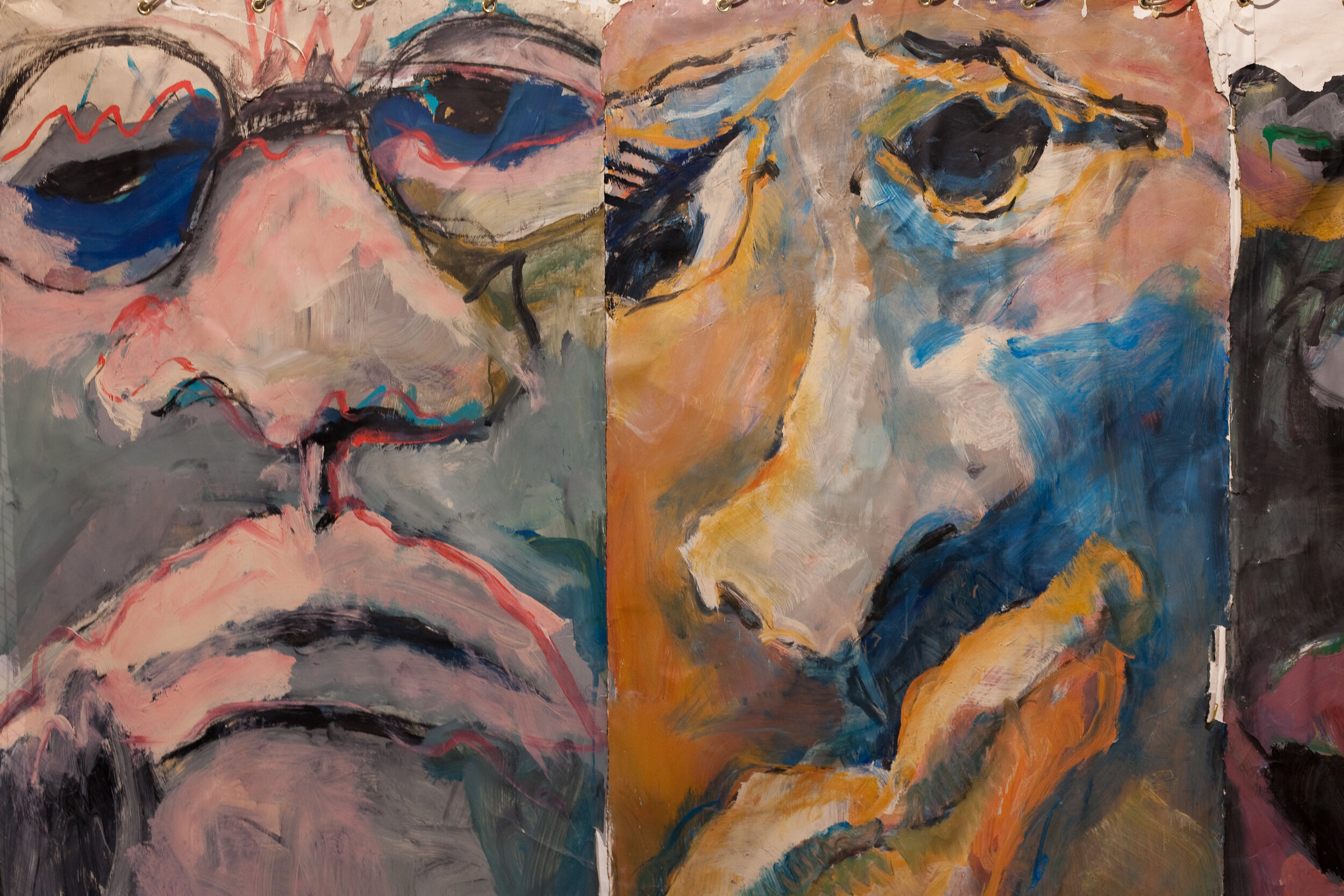ABOUT THE ARTIST
Gay P. Cox has been painting professionally since her graduation in 1988 from The School of the Museum of Fine Arts in Boston. A native of England, Cox has exhibited in dozens of solo and group shows in the greater Boston area, as well as in New York, Virginia, Colorado, Pennsylvania, and Washington D.C. Cox is a permanent deacon in The Episcopal Church and has served several multi-ethnic congregations in cities along the Merrimac River. Cox says of her work:
I always infuse my work with an active, vibrant, sensuous love of existence. The physical solidity of all true spirituality is at the heart of all my work. I find color particularly delicious and prefer to capture it “in motion.” … My relationship with God is at the heart of all my work, informing and vitalizing the subject and its emergence. My hope is always that my paintings will invite us deeper into the richness of life in God.
Learn more about Cox’s life and artistic work on her professional website: www.gpcox.com
In the essay below, Cox describes the genesis of the project that has absorbed her energy and imagination for several decades.
TRAVELING TABERNACLES: A Work in Progress
Nearly thirty years ago in a small room in our apartment in Newburyport, Massachusetts, I began what I thought would be a small series of paintings around the theme of forgiveness and reconciliation. Only gradually did this endeavor take shape as five separate but linked portable “rooms” of paintings. I imagined viewers drawn along a single path towards a vision of Paradise, making a visual pilgrimage on the Way of Salvation.
Part 1: The Committee
The first room would be full of enormous faces, expressing the gamut of judgmental attitudes, reflecting the criticisms people make without compassion or love. In my own life, such demeaning comments could be as seemingly innocuous as “that’s stupid,” or outright cruel and mean-spirited, as in “you’ll never be anything, you’re worthless.” Such judgmentalism can distort our self-image and cause long-term damage. Twelve Step groups sometimes refer to “bad tapes” or “stinking thinking.”
When these voices of negativity take control it’s as if our emotions, mind, and very soul become hemmed in by their untruths. We feel claustrophobic—at least I did—hardly able to breathe. This sense of our vulnerability can be terrifying.
An element of healing from the effects of such constant nagging can be to bring the comments out into the open in larger-than-life faces that you can stare down.
I came to think of these paintings as the Death of a Committee, a sort of anteroom to The Way of Salvation itself. Painted in mixed media on large pieces of paper taped together, these semi-abstract images allowed me—a Christian—to place everything harmful, hurtful and destructive upon Christ as he dies on the Cross.
The first painting in this series was a large collage (7 by 5 feet) of the statements, images, and situations that threaten to overwhelm me. I imagined hammering, gluing and throwing them at Christ. When I ran out of space on one piece of paper I taped on another piece. I matched my movements to my feelings as I made the marks on the surface, adding in old drawings and old mean sayings. Taking the shape of a large T, this chaotic collage became cruciform.
For some people, the picture felt violent. But things which crush and deform the soul are violent. Eventually, if not dealt with, they kill our spirit. And my painting wasn’t just symbolic. If Christ Incarnate is involved, it has to be real: a real beating, a real body, real suffering. Only real death could yield the real resurrection. In a second painting, I concentrated on the reality of the blood that would have covered Jesus’ body.
I could imagine a small 12-by-12-foot room filled with judgmental faces as an external embodiment of my own mind. But its purpose is as a place where others, too, could recognize their own committees of judgment, and in the end, as I did, experience a deeper understanding of what forgiveness, reconciliation and freedom actually mean, having walked with Christ to the cross where all false accusations are borne and dissolved in his blood.
Part 2: Stations of the Cross
After painting the first claustrophobic ‘room’ of miserable looking faces with large eyes dripping with scorn and derision, I embarked on the next Room: the Fourteen Stations of the Cross.
The ancient tradition of walking with Jesus on his Way to the Cross is still practiced in many but not all denominations, typically on Good Friday. It has a long history in art as well. Christ’s Via Crucis set me wondering if painting each Station would deepen my own relationship with Christ and my understanding of the “cost” of my forgiveness.
Several versions of these stations exist, but I chose to follow the most traditional sequence:
Jesus is condemned.
Jesus takes up his cross.
Jesus falls for the first time.
He sees his mother.
Simon of Cyrene helps to carry the cross.
Veronica wipes Jesus’s face with a cloth.
He falls a second time.
The women of Jerusalem come to see him.
He falls a third time.
He is stripped of his garments.
Jesus is nailed to the cross.
He dies.
Taken down from the cross, He is placed in his mother’s arms.
Jesus’s body is placed in the stone tomb.
The challenge I set for myself was to evoke the action and experience of each station only through an image of Christ’s face. As with the Faces of Judgment, I knew that the Faces of Christ on the Via Crucis must be very large—hanging like tapestries, unframed. These would be faces that could be touched.
I wanted to erase as much as possible the ‘aesthetic distance’ often activated when viewing framed paintings in a gallery or museum. With this project, I wanted to forget all about the art market, and to paint to the glory of God regardless of the cost personally. (I confess that this wasn’t so easy for me, since my work as an artist is expected to add to the family income. There have been times when I have railed against God because I felt that my vocation as a painter was actually going nowhere professionally.)
I meditated on the passages in Scripture about Jesus’s crucifixion, and prayed through them while painting. “Then Pilate took Jesus and had him flogged. The soldiers twisted together a crown of thorns and put it on his head. They clothed him in a purple robe and went up to him again and again, saying, ‘Hail, King of the Jews!’ And they struck him in the face” (John 19:1-3), and so forth, including the prophetic passages such as Isaiah’s “Surely he has borne our griefs and carried our sorrows: Yet we esteemed him stricken, smitten by God and afflicted” (53:4), and Psalm 22: “My God, my God, why hast thou forsaken me? why art thou so far from helping me? … All who see me mock me; they hurl insults … I am poured out like water, and all my bones are out of joint … They divide my clothes among them and cast lots for my garment.”
And because I believe that God takes us as the flawed beings we are, I decided I would begin with a previously painted canvas. I resisted our cleaned up, westernized view of what such a bloody ordeal might look like. I wanted the faces to evoke a Jewish man from the Mideast, not a Western European.
Nearly all these images are taller than I am. Looking into Jesus’ eyes as he is suffering, with his eyes looking straight into mine is humbling. Painting this subject that large was spiritually challenging in its intimacy. I knew God was asking me to walk with Christ on his way to die. Look into his eyes, search my heart, wonder what it was like for him to suffer this way.
For the first fall, station number three, Christ is horizontal his face crushed beneath the weight of the cross. For the eighth station where he meets the women of Jerusalem, we see a hand holding a cup of water and another one drying the blood with the cloth, and yet another hand lifting the thorns of the crown of thorns from his forehead. In this way perhaps they were able to refresh him and tend to his need as he travels onward to death. At the same time I imagine Simon of Cyrene with muscular arms lifting the cross from Christ. When it came to Jesus nailed to the cross the text I had in my mind concerned the two thieves hanging from their own crosses on either side of Christ. One rails at Christ the other one calls out for Jesus to forgive him and remember him when Christ comes into his kingdom. And this Jesus does. It seemed important to me and still does, to suppose that the look Christ gave both men would have been the same look of loving invitation.
For Christ’s beating and trial I turned to the colors of bruising: blue, purple, red for blood, with little sense of the color of flesh. Elsewhere I drew on earth-tone colors that I associate with Palestine and the Mediterranean. For the slack and ugly face of the dead Christ I turned towards flat green tones and dull yellow. Truly dead. The tenth station presented the particular challenge of evoking a naked body, stripped of his garments, from the face alone. My solution was to depict a clean-shaven face like that of a boxer at the end of a long and grueling match.
The only exception to the un-framed canvases is the twelfth Station, designed as a diptych that opens up from the middle on hinges. When closed, we see only the face of the dead Christ. Opened, and thus twice the width (at 8 feet), the face of the Resurrected Christ is revealed.
Click here for the musical interpretation of these Stations of the Cross, composed by Mark Retallack for small orchestral ensemble, recorded at St. Peter’s Episcopal Church in Beverly, Massachusetts.
Part 3: the Angels
During respites from the emotional intensity of the Stations of the Cross, I began work on what I had imagined as the fourth Room of the Way of Salvation: the Angelic Host, mainly of those angels named in the Scriptures.
Most of us, I suppose, imagine angels as the winged creatures portrayed in art through the centuries, depictions often striking me as passive, sweet, well dressed humans with wings. Yet, except for the cherubim and the Seraphim, we are told very little about what angels look like.
Only one angel is described in the Bible as an archangel: Michael, the leader of the angelic host who will defeat Satan in battle, referred to in Jude 1:9 as “contending with the devil,” and described in Revelations (12:7-9): “And war broke out in heaven: Michael and his angels fought with the dragon; and the dragon and his angels fought, but they did not prevail, nor was a place found for them in heaven any longer.” But how would this majestic Archangel, the warrior in charge of God’s armies, look? I found myself imagining Archangel Michael as a very large bird of prey with the human body and hands, eyes like an eagle, flying towards you on enormous wings, sword in hand. Or perhaps as just simply appearing, as if the curtain between us and the unseen world had been lifted in an instant. It makes sense to me that if the Seraphim and the Archangels are meant to do real work in the battle of good over evil, then they should look as if they can do grievous bodily harm. None of us wants to think of some feathered wimp appearing in our hour of need.
Angel of the Pool
We just don’t know. But how wonderful to employ those creative imaginations that God has given us, and, while we are imagining angels in different places, remembering that God has promised that they will watch over us also.
I found myself less interested in the appearances of angels as men clothed in white—although that’s how the angel is described sitting in the empty tomb of the Resurrected Christ. But I did wonder about the others, such as the angel that stirred the healing waters of the Pool of Bethesda (described in John, chapter 5). Did he swoop down from the air, or rise up out of the water, or just suddenly appear? Left to my own devices, I imagined an immense stirring up the waters as the angel emerged from beneath them, perhaps simply touching the foot of the first person who entered.
As for the angels that came to minister to Jesus after his forty days of fasting in the wilderness, guarding his feet lest he “dash his foot against a stone,” they might also rise up out of the earth, angelic hands ready to hold up the feet of Christ as he walked along.
I painted Archangel Michael and the Angel of the pool, and the Angel of the Rocks. But the Seraphim and the Cherubim of the Mercy Seat are, if I might say, a different kettle of fish. In chapter 6 (verses 1-3) of Isaiah, the prophet describes how “In the year that King Uzziah died, I saw the Lord sitting on a throne, high and lifted up, and the train of His robe filled the temple. Above it stood seraphim; each one had six wings: with two he covered his face, with two he covered his feet, and with two he flew. And one cried to another and said: ‘Holy, holy, holy is the LORD of hosts; The whole earth is full of His glory!’”
A similarly stunning word picture is painted in the prophet Ezekiel’s vision of the four living creatures (1:5), described as having four faces, the face of a man, the face of an ox, of an eagle and the face of a lion, often understood as cherubim or seraphim with their wings. (They became associated with each of the four Gospel writers.) Because Ezekiel’s vision is set around the Emerald throne, I imagined them reflecting the green of the throne on the surface of their faces and wing. These are not your friendly little cherubs.
Paleolithic Angel
Cherubim guard of the mercy seat of the Ark of the Covenant in the form of statues in hammered gold: “You shall make a mercy seat of pure gold; two and a half cubits shall be its length and a cubit and a half its width. And you shall make two cherubim of gold; of hammered work you shall make them at the two ends of the mercy seat” (Exodus 25:17-19), but no exact description of these cherubim is given.
Without any passages in the Bible to work from, I let my imagination run wild with the Angel of the children, the party Angels and the fighting Angels. Supposing that angels are as ancient, or more ancient than we human beings, I pondered what a cave painter—artist of all those wonderful animals with hand marks on cave walls—would do if confronted by an angel. Adding plenty of sand to canvas surface, imagining myself in a cave, I created my “Paleolithic Angel” in the same colors we find in prehistoric caves.
From these beginnings, The Way of Salvation gradually came to fruition. The Rooms became Tabernacles. Like the Tabernacle of the Hebrews, these Tabernacles became peripatetic, traveling together or separately to churches and halls, installed inside and out-of-doors, always inviting active participation of visitors. Other Traveling Tabernacles were added: the Tabernacle of the Incarnation, of Women, and of the Psalms—a work in progress. But we’ll get there, God willing.


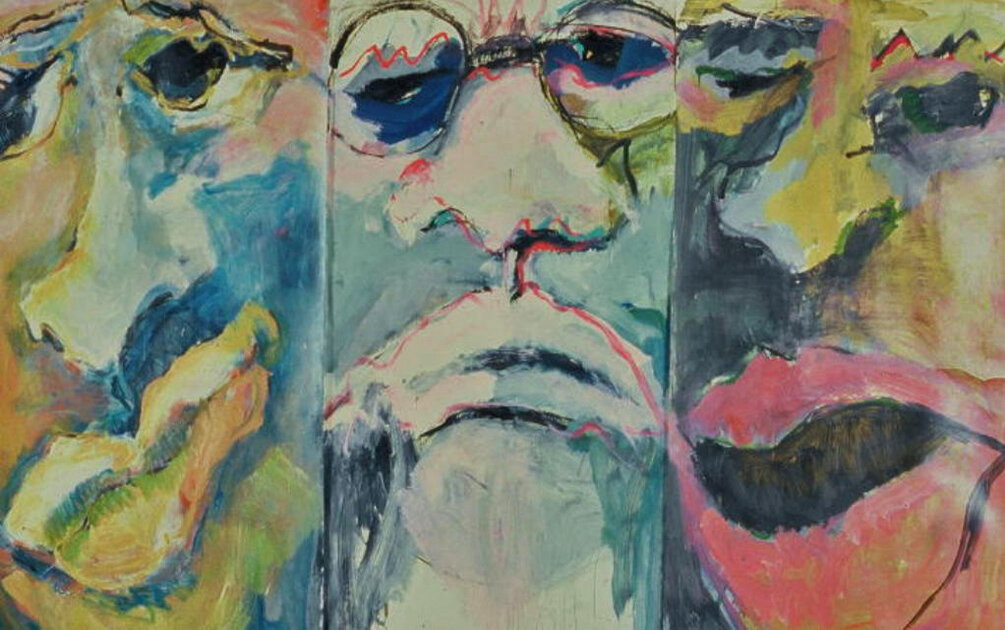
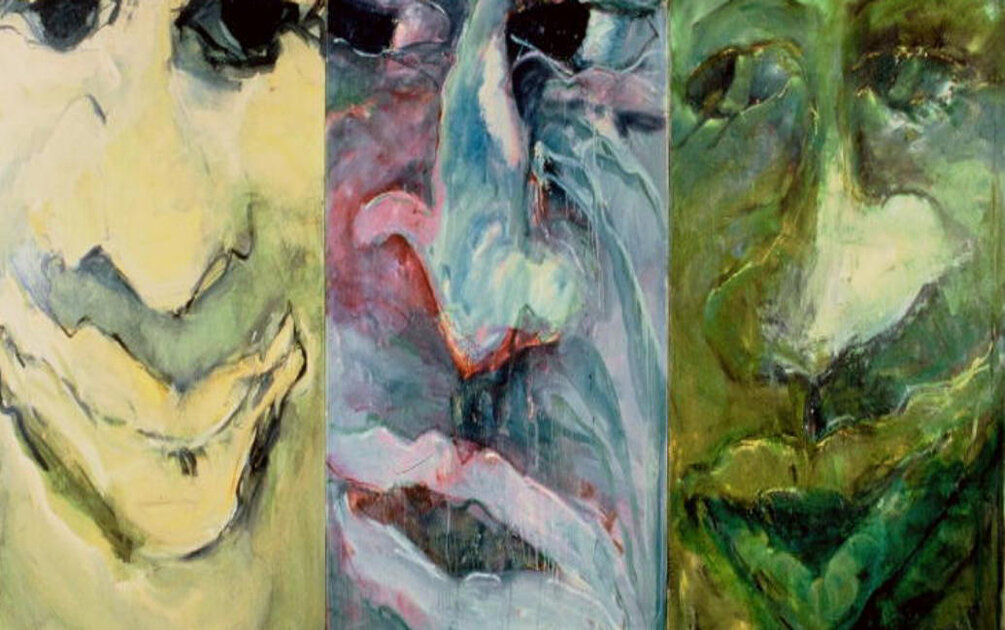
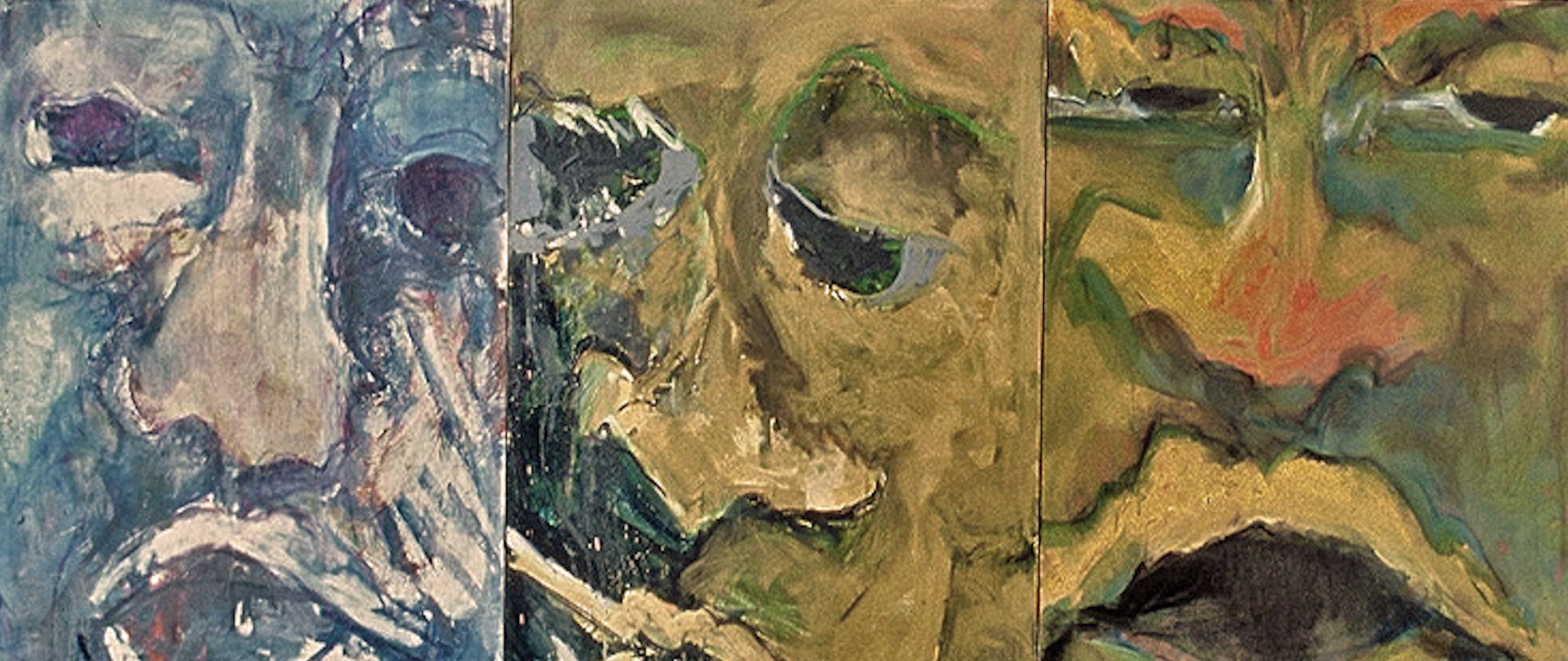
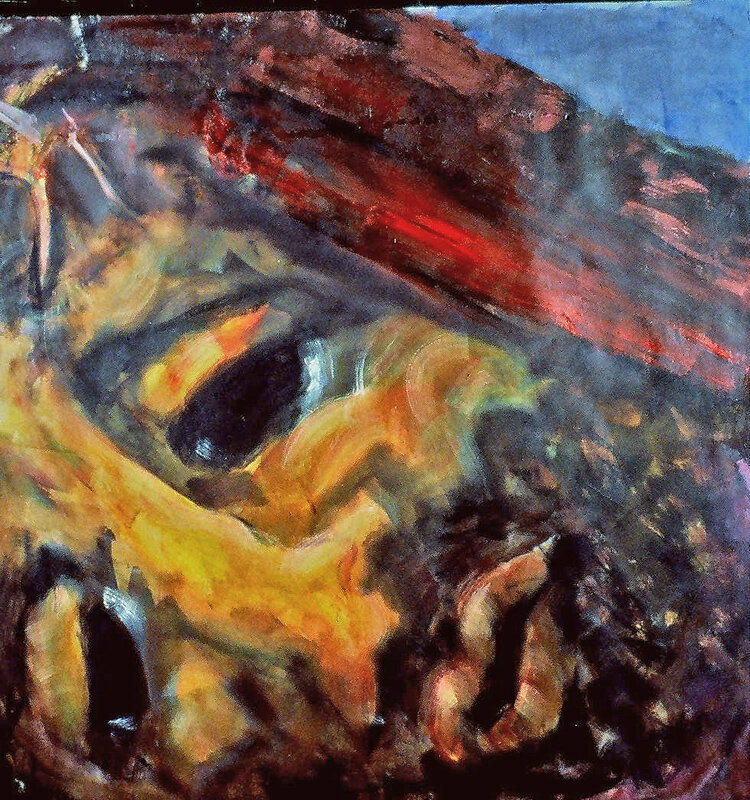
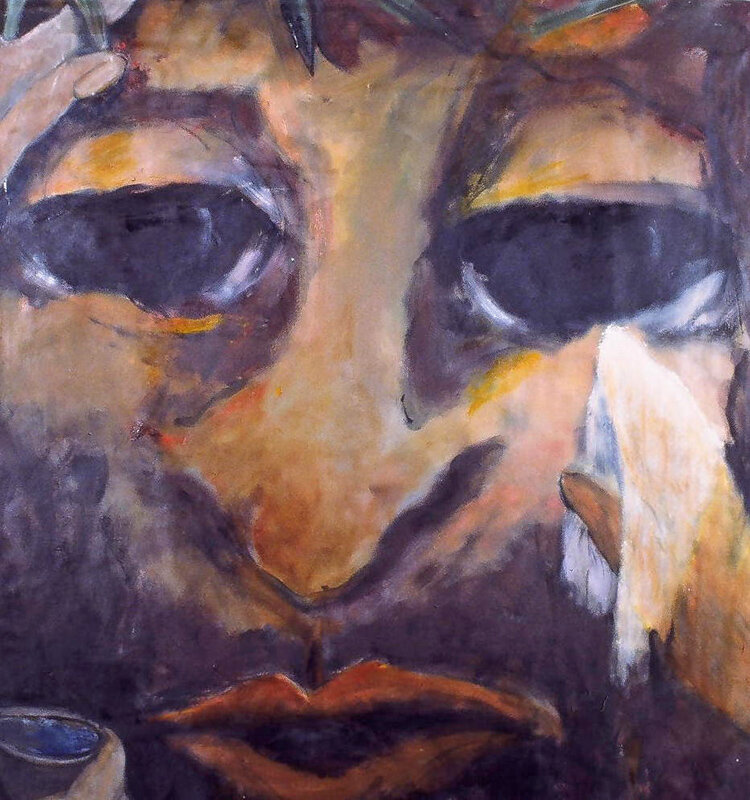
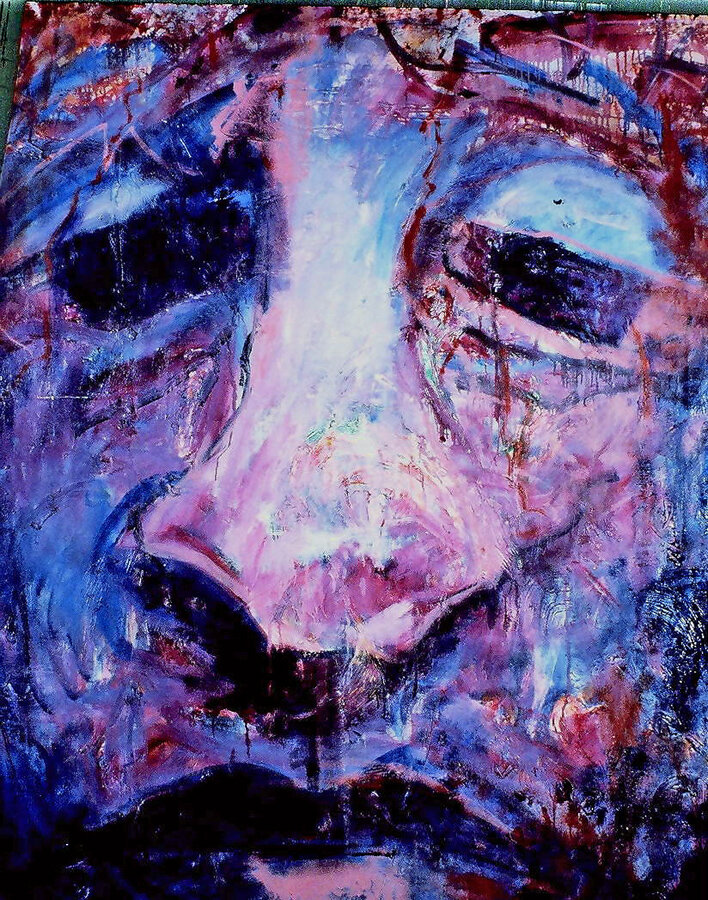
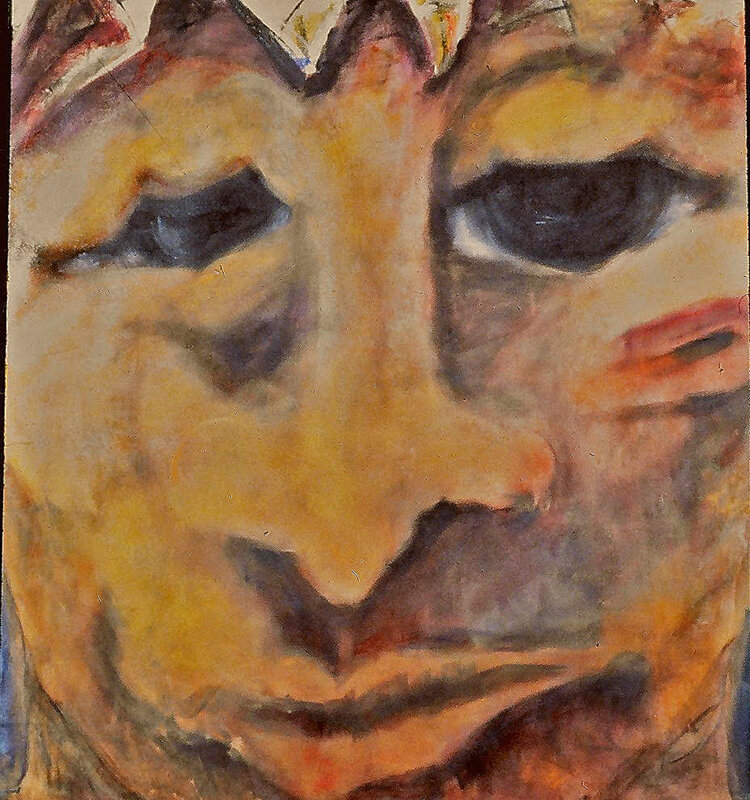
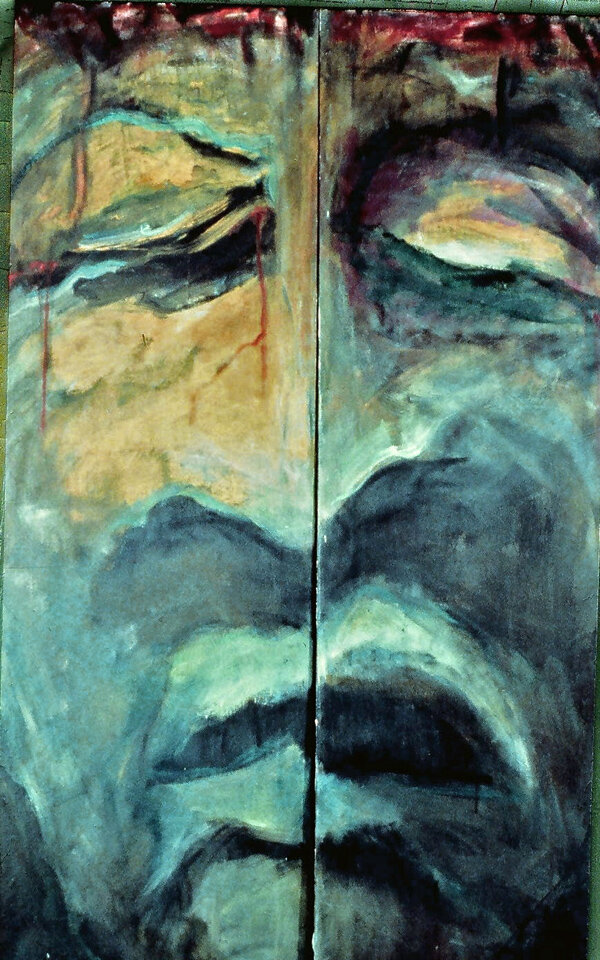

!["h].jpg](https://images.squarespace-cdn.com/content/v1/5d24656e07cfcd0001c4c5a2/1609530488118-OMO5IP9N6TNM48NZT097/%22h%5D.jpg)
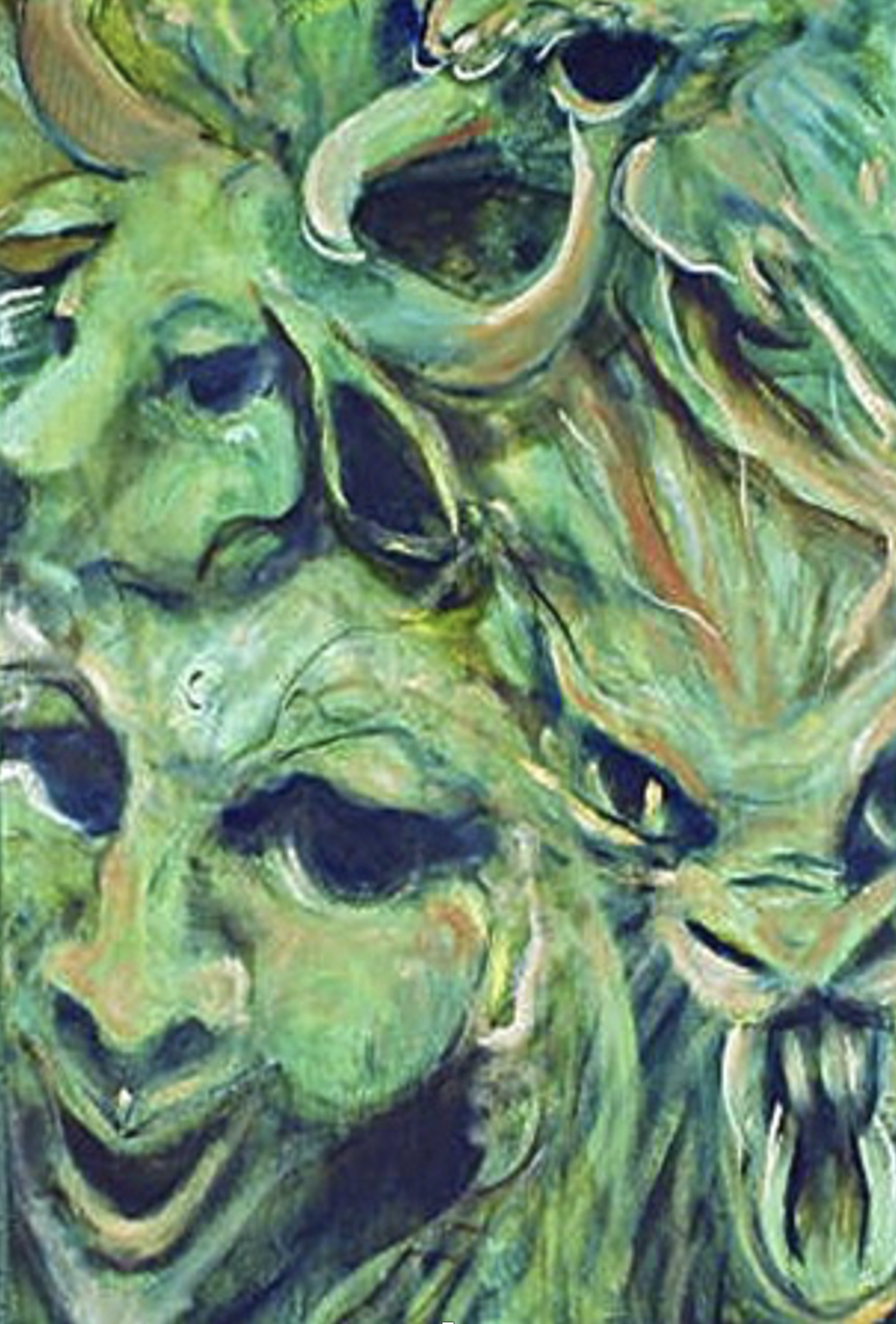
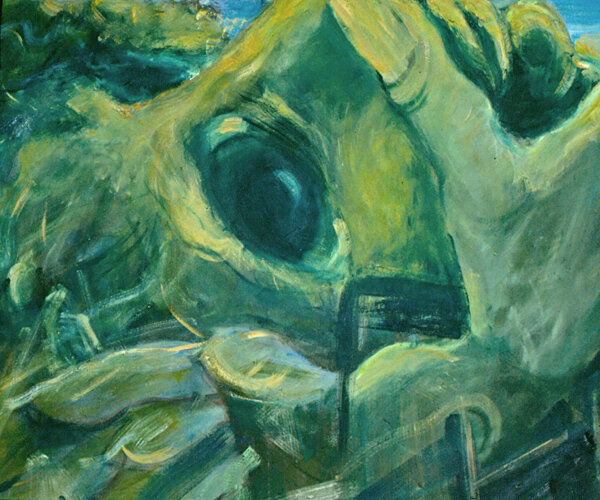

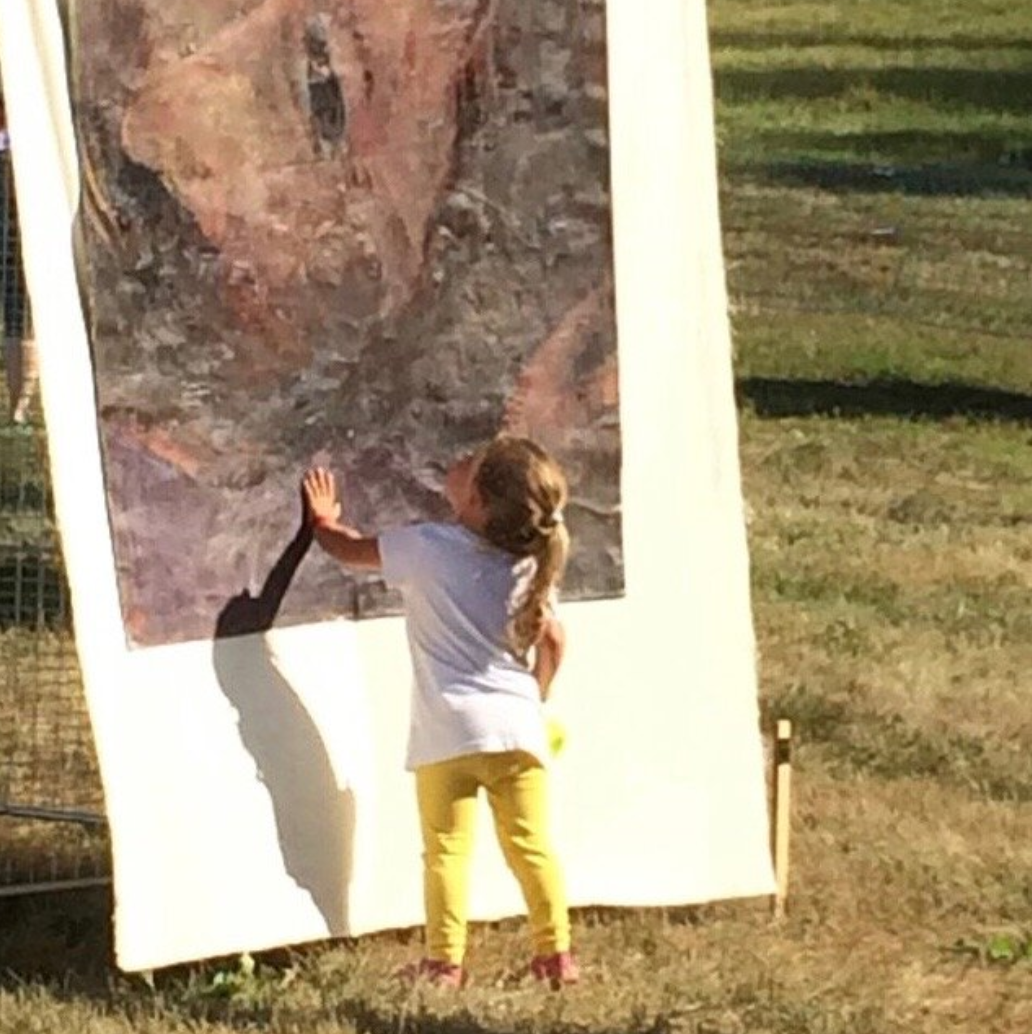
![6. Deborah (mixed media 1998) [22x30].jpg](https://images.squarespace-cdn.com/content/v1/5d24656e07cfcd0001c4c5a2/1609532115012-W9WJ7YOCIIMCK9D9DO5Q/6.+Deborah+%28mixed+media+1998%29+%5B22x30%5D.jpg)
